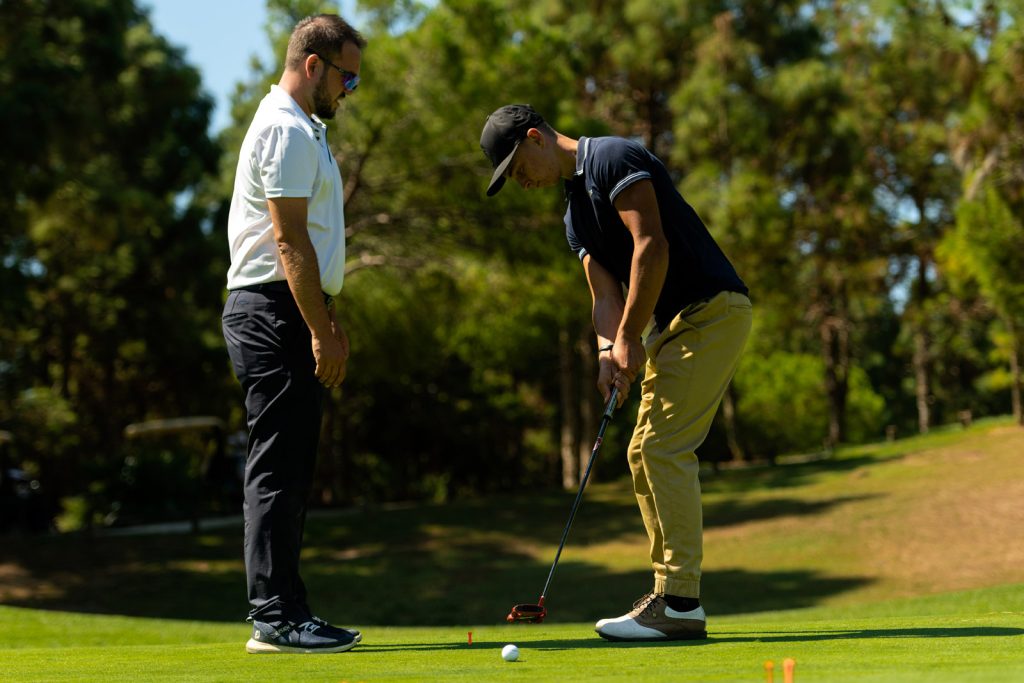
One of the biggest challenges of life in the digital world is focusing our attention on the activities we must do to meet the goals we desire.
As psychologist Daniel Goleman puts it, the lure of screens for our youth is making that focus of attention resist any sustained effort. Dreaming and planning long-term projects becomes more difficult because the brain is continuously exposed to a bombardment of dopamine from which it is difficult to turn away. Perhaps even more importantly: if we have three attentional fields -internal, external and interpersonal- it is evident how, in general terms, children today have a more challenging time interacting and empathizing with others.
At our Black Iron Golf Academy, located near Malaga on Spain’s Costa del Sol, we emphasize four elements. Firstly, eye contact with our students facilitates an emotional connection, especially when we start a class with reflective and exploratory questions about their strengths and virtues as athletes and golfers. This seems like a minor detail, but it has become complex to develop a trusting relationship between teacher and student that allows demanding a high level of effort but is reasonable and conditional on the development phase of the golf player. Suppose we manage to connect emotionally with children and adolescents from the first moment we interact with them. In that case, they will respond better to the demand for discipline that drives their sports development. Eye contact, thoughtful, appreciative questions, and the emotions conveyed in that communication are the first step in building that trust.
Secondly, in all of our golf classes, we see golfers with different personalities who respond well to different types of instruction. We can say that some junior players have a more verbal orientation than others and do not dare to make a change until they understand it conceptually. Other players have to feel the movement, even limiting the amount of information offered to them. Some work better with drills; others orient themselves better with the instructor’s guidance on their body by making slow-motion movements. In any case, knowing how a player learns best is important to optimize the golf lesson and for the player to enjoy it fully. For our youths, it is vital to know how each child or adolescent learns best since the window to capture and retain their interest is narrow.
The third element of our pedagogical approach to teaching includes the meticulous planning of activities and challenges. The level of difficulty and relevance of an activity optimizes the player’s interest in finishing it and doing it to the best of their ability. Only in this way can we generate a stimulus in the golfer’s coordination and motor system, a stimulus that when it occurs consistently, with adequate rest, primarily mental, changes the quality of the golfing motor gesture and guides us on the path of sports development.
In this third decade of the 21st century we are welcoming junior golfers to receive golf lessons and to embark on high performance processes whose spectrum of attention and interpersonal relationships are proving difficult; At Black Iron Golf Academy, we know the challenges young players face due to their environment and the domination of technology in their lives. We want to take advantage of all the experiences that golf offers us to fully train young athletes who have confidence in the construction of processes to develop their own skills and are also autonomous and disciplined in committing to their own sports process.